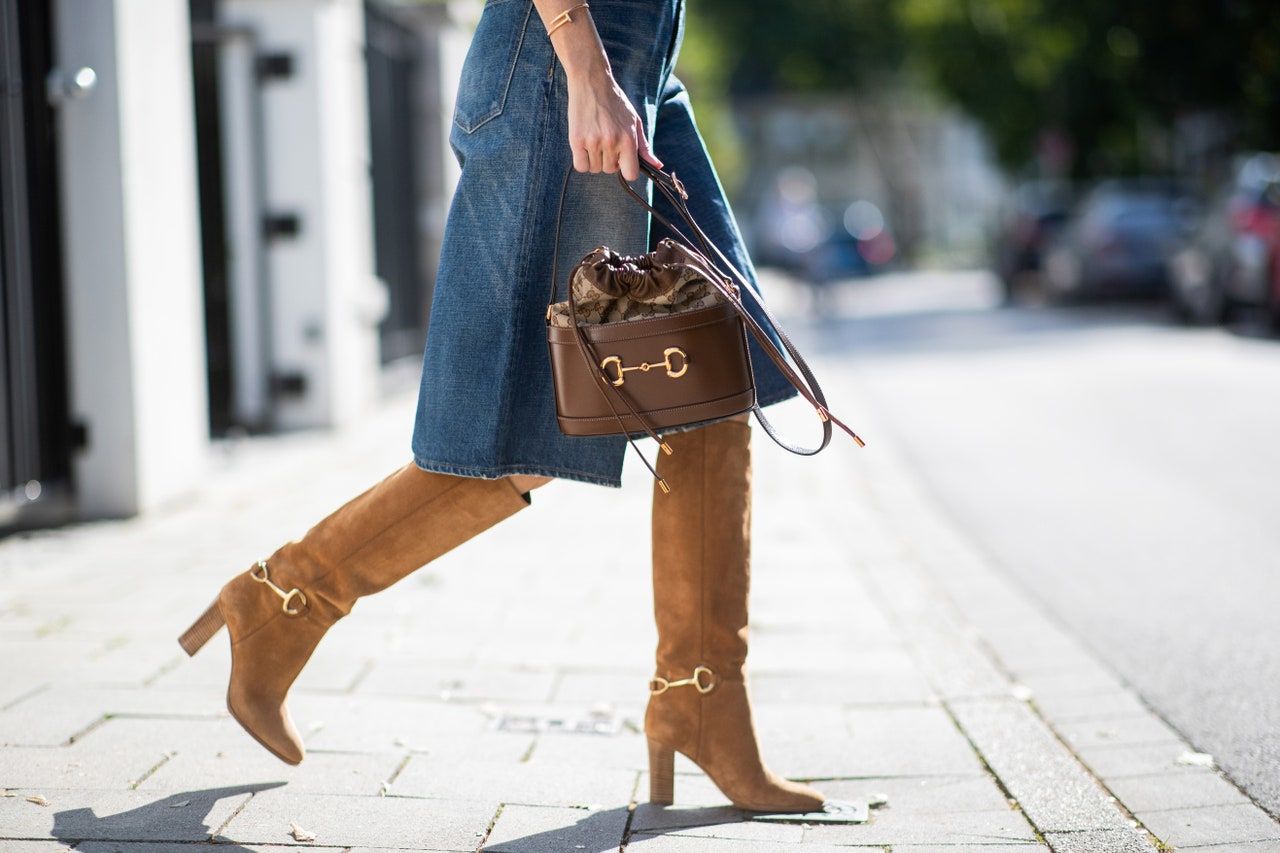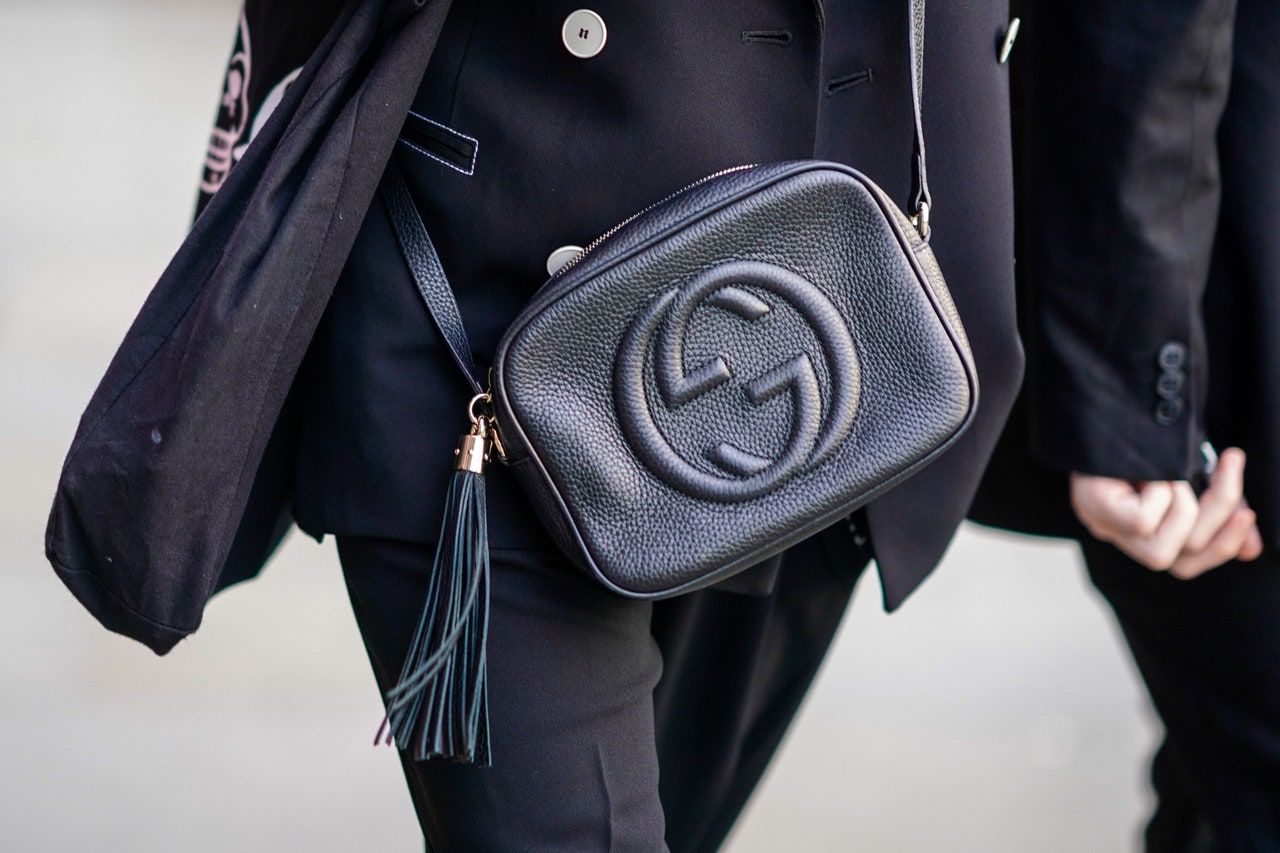In 1897, a man named Guccio Gucci left his native Florence for London, where he worked at the tony Savoy Hotel as a bellhop. Handling the luggage of the ritzy clientele there gave him the education he needed to return to Italy and produce his very own line of travel-centric leather goods. The year was 1921 when Guccio finally opened the doors to his boutique on Florence’s Via della Vigna Nuova, selling imported suitcases in addition to goods handcrafted by local artisans. It didn’t take long for customers to latch onto Guccio’s wares, and soon after that, Gucci became an outright sensation.
A trade embargo placed on Italy during Mussolini’s rule meant that materials-leather in particular-were scarce. So, Guccio and his sons Aldo, Vasco, and Rodolfo (all now part of the family business) had to get creative, making wicker, raffia, and wood Gucci signatures in addition to cuoio grasso, an incredibly smooth veal calf leather. (Nearby, the Florentine Salvatore Ferragamo was also making do with what was available with his cork-heel creations.) At around the same time, Gucci also developed a woven hemp textile with a diamond pattern, a precursor to the current double-G monogram.
Around 1947, Gucci made fashion history with its bamboo-handled bag, a structured little purse adorned with a bamboo handle bent by the heat of a flame. By 1953, Ingrid Bergman was carrying a variation in the film Viaggio in Italia, setting off Hollywood’s love affair with Gucci. Reported visitors to Gucci’s Florence shop included then-Princess Elizabeth (before her ascent to the British throne), Eleanor Roosevelt, and Elizabeth Taylor. A stint as an actor meant that Rodolfo would also bring in his own picture-making friends like Bette Davis, Katharine Hepburn, and Sophia Loren.
By the 1950s, when la dolce vita was in full swing in Rome and Manhattan was a playground for monied movers and shakers, Gucci was outfitting and accessorizing it all. Over the next two decades, Gucci opened up shops just about everywhere worth being seen. One day, at the Milan outpost, Grace Kelly walked in and got a silk scarf decorated with a feminine floral pattern (dubbed the Flora, which remains a house code to this day); on another, Jackie Kennedy Onassis picked out a hobo bag. The latter was recently reissued by Alessandro Michele, as was the bamboo-handled Diana bag. The stories behind these and other Gucci handbags, below.
Gucci Horsebit 1955
As the legend goes, glinty horsebit hardware entered Gucci’s fashionable oeuvre in 1953. It was Aldo Gucci-recognizing that shoppers liked a side of history with their handbags-who perpetuated the myth that the Gucci family had once been saddlemakers to nobility. Aldo leaned into the equine concept, and under his direction, top-stitching reminiscent of that on saddles adorned handbags; and green and red stripes seen on girth straps became a signature Gucci element, as did the Gucci horsebit. Aldo even went so far as to replace the bellhop-a nod to Guccio’s early job-in the Gucci crest with a knight in armor. Since the horsebit appeared on a handbag in 1955, that elegant hardware has become as recognizable as Chanel’s double Cs. Tom Ford, Alessandra Facchinetti, and Frida Giannini all incorporated the horsebit into their designs, and current Gucci creative director Alessandro Michele has given us the latest iteration. Presented at the house’s cruise 2020 collection, the reprised Gucci Horsebit 1955 bag comes in various shapes (tote, satchel, shoulder bag), all unified by the instantly identifiable double D-rings. After all, there’s no need for a Gucci logo when its signature hardware is present.
The Jackie 1961
Like the enduring allure of the woman it’s named after, The Jackie is a bag that will never go out of style. In 1961, Gucci introduced a Hobo-style bag that caught the eye of Jackie Kennedy, whose husband so famously loved Gucci’s loafer moccasins. It’s said that upon seeing a paparazzi image of Jackie Kennedy with the bag (then called the Fifties Constance), the Gucci family swiftly christened it the Jackie. The classic hobo-shape saw many iterations under Tom Ford and Frida Giannini, but its latest incarnation comes by way of Michele, who in 2021 gave us a spin on The Jackie with a bit more structure, an adjustable strap, and a piston closure. Back in 2014, Giannini made Kate Moss the star of the Jackie Bag campaign; now, Harry Styles is ushering in the bag’s new era.
The Diana
In the late 1990s, one often saw Princess Diana headed to and fro with a bamboo-handled Gucci bag. Hers was in putty-colored suede, and even when it accessorized her biker shorts and sweatshirts on trips to the gym, she made it look divine. As mentioned above, bamboo-handled bags have been a part of the Gucci repertoire since the very beginning, and the style has never really left the house. On Thursday, July 1, 2021-what would have been Princess Diana’s 60th birthday-Michele gave us The Diana Bag, a bamboo-handled tote much like the version worn by the Princess. On this bag we get a logo of double-Gs facing the same direction (Michele’s remix of the Gucci monogram is one of many celebrated interventions he’s made at the house) because it wouldn’t be Michele’s without a madcap flourish, he added a neon-colored elastic strap. The latter is a playful, removable touch that references the elastic bands Gucci uses to help its bamboo keep its shape.
The Marmont
The Marmont is less a single bag than a family of bags with Michele as the patriarch. Not long into his tenure as Gucci’s creative director, Michele gave us the Marmont bags with a chain-strap crossbody as the signature style. They debuted on the fall 2016 runways, capturing everything Michele intended to bottle up and sell in bag form: the untethered bohemian spirit of the ’70s and the hush-hush glamour of the Chateau Marmont. On the bag, Michele introduced his flipped Gucci logo, festooning a semi-puffed chevron-style quilted pattern of leather and velvets in gemstone hues. The Marmont collection also includes totes, backpacks, and bucket bags, and sometimes the hardware is studded with pearls. No matter which you choose, you can’t go wrong.
The Dionysis
No bag better encapsulates the Geek Chic aesthetic of modern-day Gucci than Michele’s first bag for the brand, The Dionysus. The crossbody bag features a double-flap shape in Gucci’s coated canvas textile, and it’s closed with U-shaped hardware that can be traced back to Gucci’s fall 2015 ready-to-wear collection. (With The Dionysus, Michele added a new signature piece to the Gucci vocabulary: Yes, we know all about the horsebit, but how about some snakes?) Dionysus is the god of agriculture, wine, and revelry, and-befitting Michele’s more-is-more aesthetic code-the bag that takes his name is decorated with fantastical jungly embroideries, eclectic bolts, and patchworked with the kind of decals you might find on a Girl Scout’s vest. Like a Greek deity, the Dionysus bag is widely worshipped, and has maintained its It-bag status since its introduction.
The Soho Disco
In 2012, Frida Giannini (who succeeded Alessandra Facchinetti as Gucci’s creative director in 2006) introduced the Soho Disco bag line. Included was a camera-style crossbody bag crafted with a pebbled calfskin leather and embossed with the interlocking double-G logo. And like all Gucci bags, the Soho Discos are crafted in Prato, just outside of Florence.
For the finishing touch? A hefty leather tassel as a zipper pull. The piece quickly reached It-bag status, appearing on downtown girls and boys around Soho in fun, saturated colors (though currently, the house only offers the bag in black and beige) as the ultimate hands-free accessory. All the better to use those limbs for a night at the disco, no?













